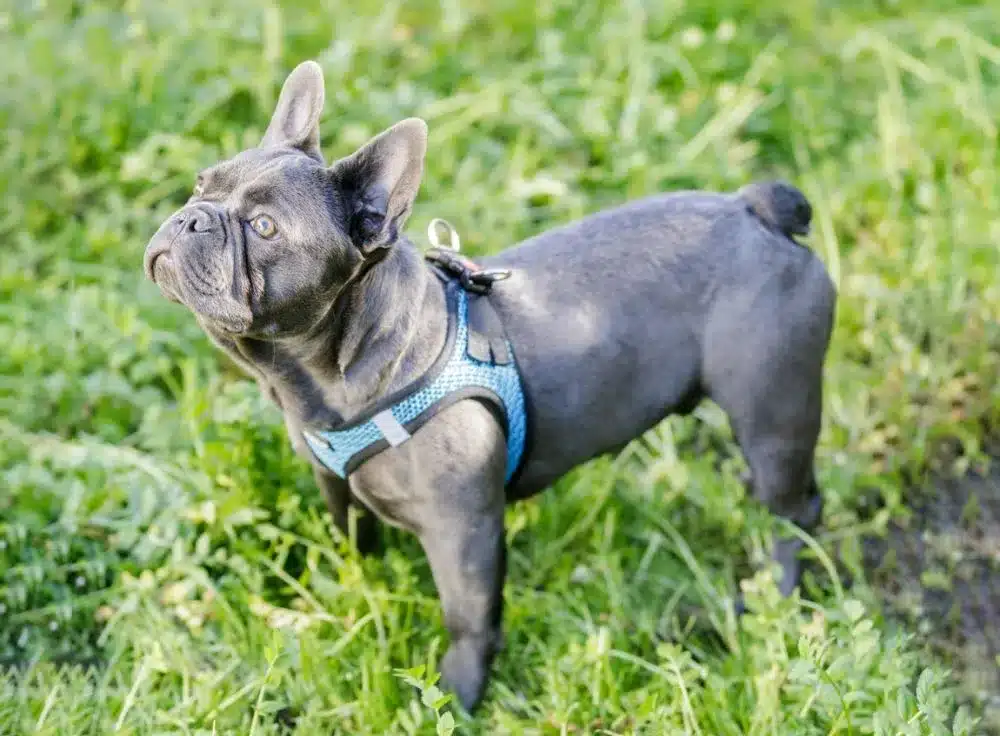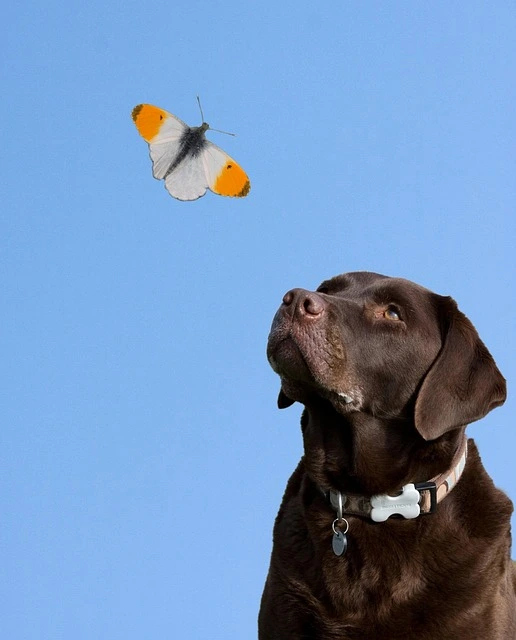Last month, I met Sarah, a devoted dog lover who’d been dreaming of a large, cuddly companion for years. The only problem? Her family’s allergies meant traditional shedding breeds were off the table. When she discovered that big dogs that don’t shed actually exist, it opened up a whole new world of possibilities. If you’re in a similar situation—craving the gentle presence of a large dog without the constant battle against fur tumbleweeds—you’re in the right place.
While no dog is completely hypoallergenic, certain large breeds shed significantly less than others, making them excellent choices for allergy sufferers and tidy home enthusiasts alike. In this comprehensive guide, we’ll explore the top 10 big dogs that don’t shed much, along with everything you need to know about caring for these magnificent low-shedding companions.
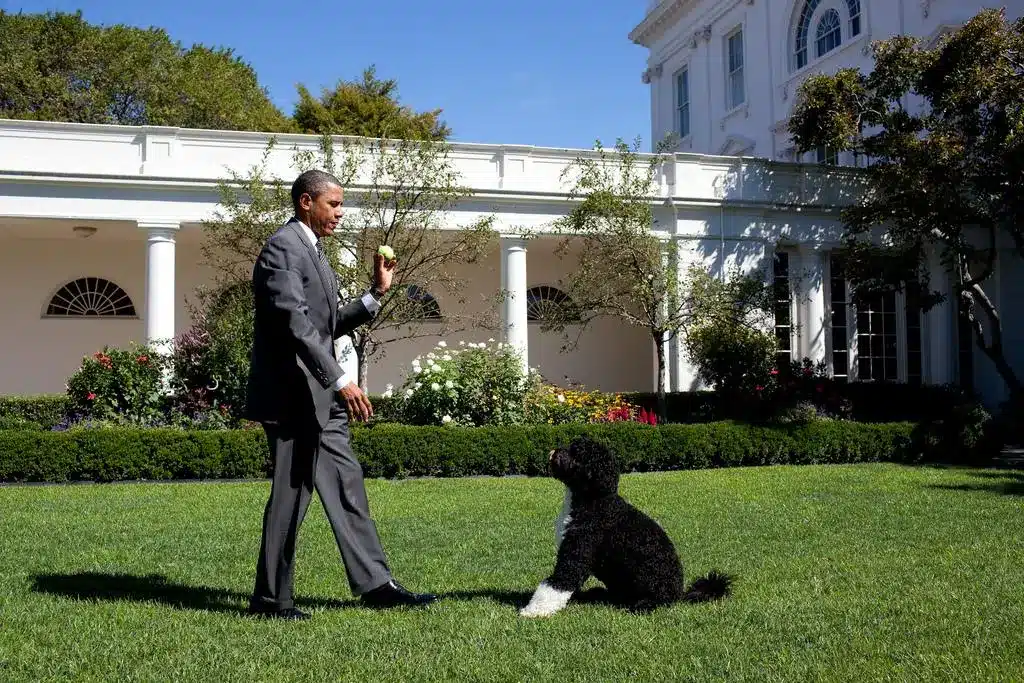
Table of Contents
Understanding the Reality Behind “Non-Shedding” Big Dogs
Before diving into specific breeds, it’s crucial to understand what we mean when we talk about big dogs that don’t shed. The truth is, every dog sheds to some degree—it’s a natural process of coat renewal. However, certain breeds have coat characteristics that make them shed far less noticeably than others.
What Makes Some Dogs Shed Less?
Big dogs that don’t shed much typically have one of these coat types:
Single-Layer Coats: Unlike double-coated breeds that shed seasonal undercoats, single-coated dogs release far less hair. Their hair often grows continuously and falls out less frequently.
Curly or Wiry Textures: These coat types tend to trap loose hair within the coat rather than allowing it to fall onto your furniture and clothes. Regular grooming removes this trapped hair before it becomes a problem.
Hair vs. Fur: Some breeds have hair (similar to human hair) rather than fur. Hair grows longer, sheds less, and produces fewer allergens than traditional dog fur.
The Allergy Connection
According to the American Kennel Club, it’s actually dander (microscopic skin flakes) rather than hair that triggers most dog allergies. Big dogs that don’t shed much often produce less dander or have coat types that contain it better, making them more suitable for sensitive individuals.
I’ve worked with hundreds of families over the years, and I’ve seen how the right low-shedding breed can transform a household where allergies previously made dog ownership impossible.
Top 10 Big Dogs That Don’t Shed Much
1. Standard Poodle
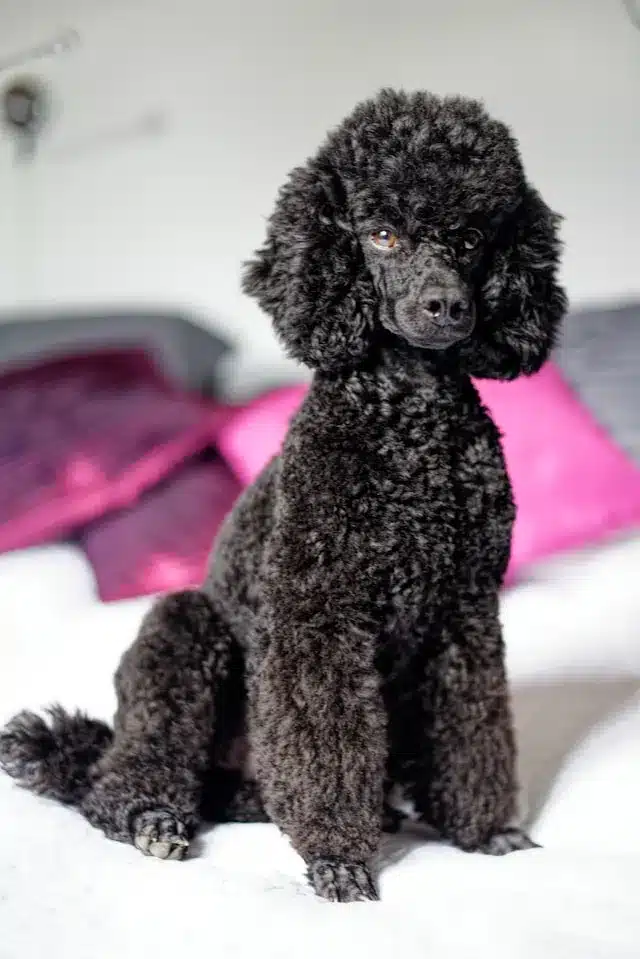
The Standard Poodle tops our list of big dogs that don’t shed for good reason. These intelligent, athletic dogs have been bred for centuries to have minimal shedding coats.
Size: 45-70 pounds, 15+ inches tall Coat Type: Dense, curly, hypoallergenic Shedding Level: Minimal
Standard Poodles are incredibly versatile dogs that excel in everything from family companionship to competitive sports. Their curly coat traps loose hair, preventing it from falling around your home. However, this same quality means they require professional grooming every 6-8 weeks.
Grooming Needs: Daily brushing prevents matting, and regular professional grooming is essential. For at-home maintenance, we recommend the Chris Christensen Big G Dog Slicker Brush, which works exceptionally well on poodle coats.
2. Portuguese Water Dog

Originally bred to work alongside Portuguese fishermen, these medium-to-large dogs are perfect examples of big dogs that don’t shed excessively.
Size: 35-60 pounds, 17-23 inches tall Coat Type: Waterproof, curly or wavy Shedding Level: Very low
These energetic dogs require plenty of exercise and mental stimulation. Their water-resistant coat can be either curly (similar to a poodle) or wavy, but both varieties shed minimally. President Obama’s family chose this breed specifically because of their daughter’s allergies.
Exercise Requirements: Portuguese Water Dogs need at least 60-90 minutes of vigorous exercise daily. The Chuckit! Ultra Ball is perfect for these water-loving athletes.
3. Afghan Hound
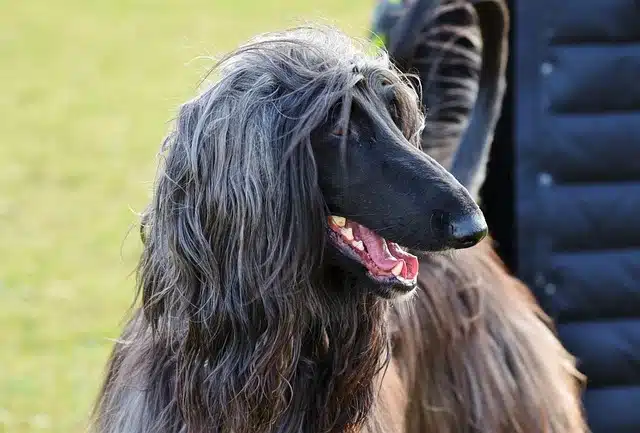
Don’t let their glamorous, flowing coat fool you—Afghan Hounds are actually among the big dogs that don’t shed much, despite their luxurious appearance.
Size: 50-60 pounds, 25-27 inches tall Coat Type: Long, silky, single-layered Shedding Level: Low
Afghan Hounds have a unique single-layer coat that sheds far less than you’d expect. However, that beautiful coat requires significant maintenance. These independent, dignified dogs were originally bred for hunting in the mountains of Afghanistan.
Grooming Investment: Afghan Hounds require 2-3 hours of grooming per week. The FURminator Long Hair deShedding Tool helps maintain their coat between professional grooming sessions.
4. Giant Schnauzer
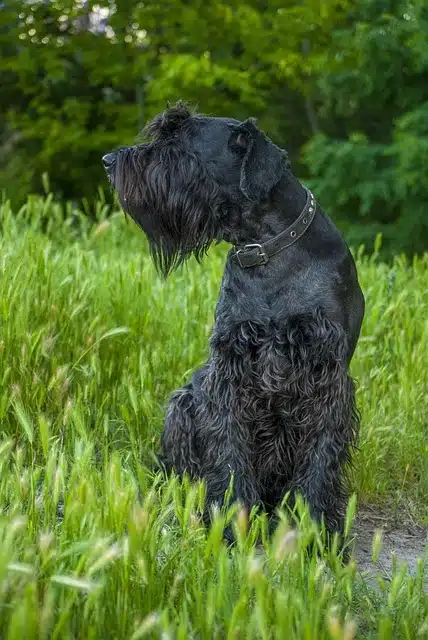
The largest of the Schnauzer family, Giant Schnauzers are impressive big dogs that don’t shed much thanks to their distinctive wiry coat.
Size: 55-85 pounds, 23.5-27.5 inches tall Coat Type: Wiry, double-layered Shedding Level: Minimal
These powerful, intelligent dogs were originally bred as working dogs in Germany. Their harsh outer coat and soft undercoat shed very little, but they do require regular grooming to maintain their characteristic appearance.
Training Note: Giant Schnauzers are highly intelligent but can be strong-willed. Early socialization and consistent training are essential.
5. Irish Water Spaniel
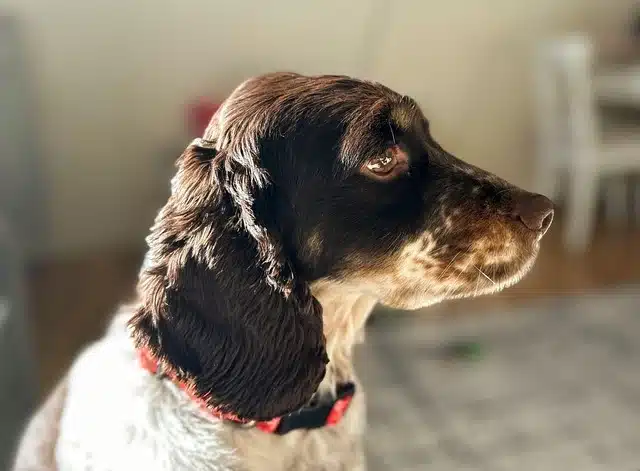
The clown of the spaniel family, Irish Water Spaniels are athletic big dogs that don’t shed much, making them excellent family companions.
Size: 45-68 pounds, 21-24 inches tall Coat Type: Dense, curly, water-repellent Shedding Level: Very low
These energetic dogs have a distinctive curly coat that naturally repels water and traps loose hair. They’re excellent swimmers and require active families who can provide plenty of exercise and mental stimulation.
6. Komondor
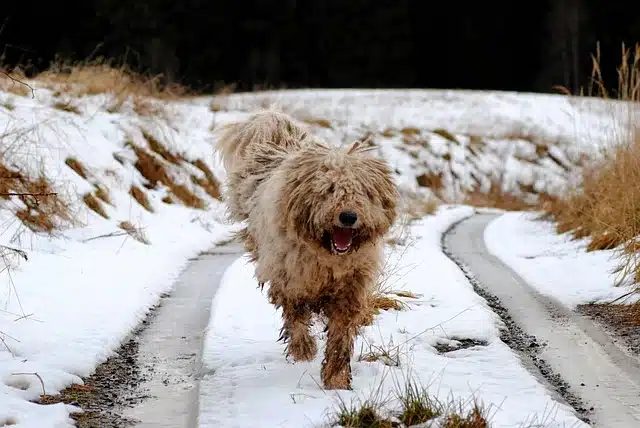
Perhaps the most unique-looking among big dogs that don’t shed, the Komondor’s corded coat is virtually shed-free.
Size: 80-130 pounds, 25.5-27.5 inches tall Coat Type: Long, corded (like dreadlocks) Shedding Level: Nearly zero
The Komondor’s distinctive coat forms natural cords that don’t shed in the traditional sense. Occasionally, a dog might lose an entire cord, but day-to-day shedding is virtually nonexistent. These guardian dogs are protective and loyal to their families.
Special Care: Komondor coats require specialized care to maintain the cords properly. Professional grooming experience with this breed is essential.
7. Airedale Terrier
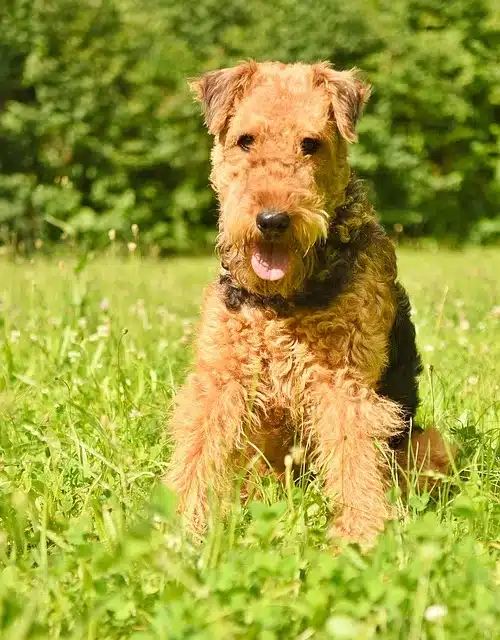
Known as the “King of Terriers,” Airedales are the largest terrier breed and excellent examples of big dogs that don’t shed much.
Size: 50-70 pounds, 22-24 inches tall Coat Type: Hard, wiry outer coat with soft undercoat Shedding Level: Low
Airedales have confident, outgoing personalities and make excellent family dogs. Their wiry coat requires hand-stripping twice a year to maintain its texture and minimize shedding.
Activity Level: These energetic dogs need at least 60 minutes of exercise daily. The KONG Classic Dog Toy provides excellent mental stimulation for these intelligent terriers.
8. Bouvier des Flandres

Originally bred as farm dogs in Belgium, Bouviers are robust big dogs that don’t shed much despite their substantial coat.
Size: 70-110 pounds, 24.5-27.5 inches tall Coat Type: Thick, rough, weather-resistant Shedding Level: Low to moderate
These versatile working dogs are calm, gentle with children, and make excellent guard dogs. Their thick coat requires regular grooming but sheds much less than you’d expect for such a substantial coat.
9. Black Russian Terrier
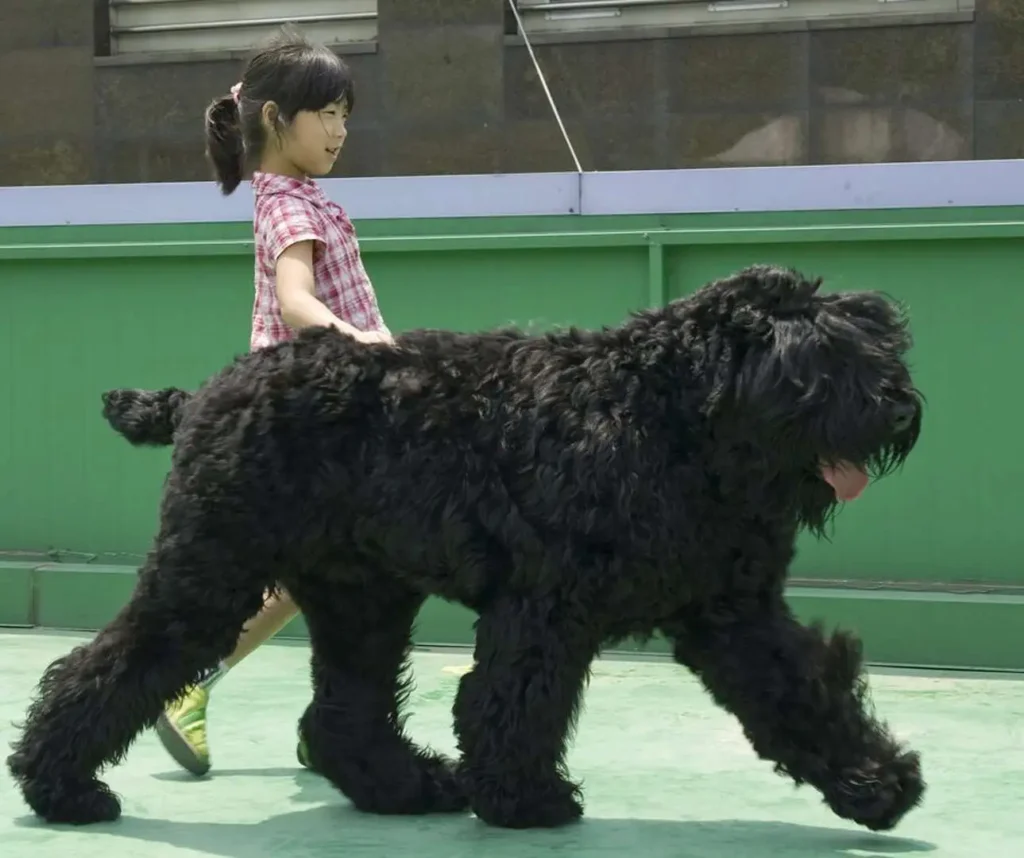
Despite their name, Black Russian Terriers are actually quite large and are excellent big dogs that don’t shed excessively.
Size: 80-130 pounds, 26-30 inches tall Coat Type: Coarse, wavy, weather-resistant Shedding Level: Low
These powerful dogs were bred as military working dogs and have calm, confident temperaments. Their weather-resistant coat requires regular grooming but produces minimal shedding.
10. Xoloitzcuintli (Standard Size)
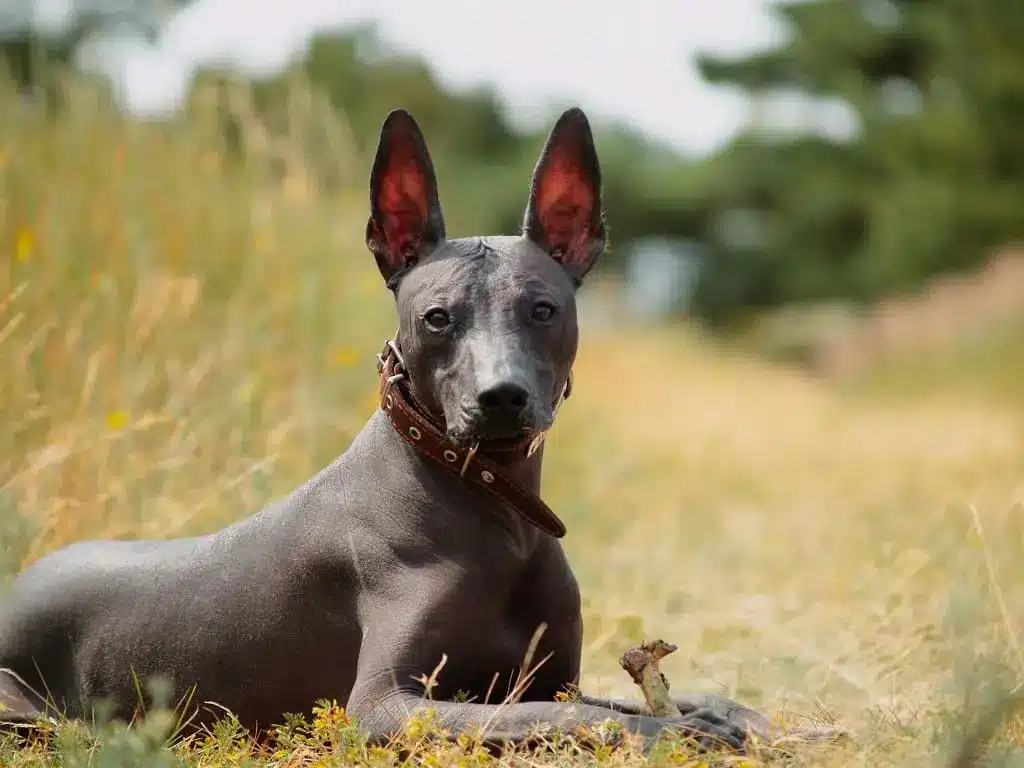
The largest variety of this ancient Mexican breed offers a unique option among big dogs that don’t shed—because they’re hairless.
Size: 30-55 pounds, 18-23 inches tall Coat Type: Hairless or short-coated Shedding Level: Zero (hairless) or minimal (coated)
The hairless variety produces no shedding whatsoever, making them ideal for severe allergy sufferers. However, their skin requires special care including sunscreen and moisturizer. These calm, alert dogs make excellent companions and are known for their loyalty and protective instincts.
Special Care: Hairless varieties need skin protection from sun and cold. The Epi-Pet Sun Protector Spray is specifically formulated for dogs’ sensitive skin.
Essential Care Tips for Big Dogs That Don’t Shed
Grooming Requirements
While big dogs that don’t shed much are easier to live with in terms of household cleanliness, they often require more intensive grooming than their shedding counterparts. Here’s what you need to know:
Professional Grooming: Most low-shedding breeds need professional grooming every 6-8 weeks. This isn’t just for appearance—it’s essential for coat health and comfort.
Daily Brushing: Prevent matting by brushing daily, especially for curly-coated breeds. The Hertzko Self Cleaning Slicker Brush works well for most coat types.
Specialized Tools: Different coat types require specific tools. Wire-coated breeds benefit from stripping knives, while curly coats need slicker brushes and metal combs.
Nutrition for Coat Health
Proper nutrition plays a crucial role in maintaining the healthy coats that make these big dogs that don’t shed so appealing. A diet rich in omega-3 fatty acids supports skin and coat health, potentially reducing dander production even further.
For dogs with sensitive skin or allergies, choosing the right food is essential. Our comprehensive guide on the best dog food for allergies can help you select nutrition that supports both your dog’s overall health and coat quality.
Exercise and Mental Stimulation
Many big dogs that don’t shed were originally working breeds, meaning they have high energy requirements and intelligent minds that need stimulation. Regular exercise not only keeps them physically healthy but also contributes to better coat condition and reduced stress-related shedding.
Daily Requirements: Most large breeds need 60-90 minutes of exercise daily, combining physical activity with mental challenges.
Weather Considerations: Some low-shedding coats offer less protection from temperature extremes. Hairless breeds especially need protection from sun and cold.
Common Mistakes When Choosing Big Dogs That Don’t Shed
Expecting Zero Maintenance
One of the biggest misconceptions about big dogs that don’t shed is that they’re low-maintenance. In reality, many require more grooming than traditional breeds. The trade-off is less hair in your home, not less care overall.
Overlooking Exercise Needs
Many people focus so much on the shedding aspect that they forget to consider whether the dog’s energy level matches their lifestyle. A Standard Poodle might not shed, but they’re incredibly active and intelligent dogs that need significant daily exercise and mental stimulation.
Assuming Hypoallergenic Means Allergen-Free
While big dogs that don’t shed much are often better for allergy sufferers, no dog is completely hypoallergenic. Some people may still react to dander, saliva, or other allergens even from low-shedding breeds.
Choosing Based on Appearance Alone
The Afghan Hound’s gorgeous coat might catch your eye, but these independent dogs have specific temperament traits that don’t suit every family. Research personality and care requirements, not just shedding characteristics.
Skipping the Meet-and-Greet
Before committing to any breed, spend extended time with the type of dog you’re considering. Individual dogs within breeds can vary significantly in their allergen production and temperament.
When to Consult a Professional
Health Concerns
If you notice changes in your low-shedding dog’s coat—such as thinning, excessive matting, or skin irritation—consult your veterinarian. Sometimes coat problems indicate underlying health issues.
Grooming Challenges
Certain breeds like Komondors or Afghan Hounds require specialized grooming knowledge. If you’re struggling with coat maintenance, seek professional guidance rather than risking damage to your dog’s coat or skin.
Allergy Management
If family members continue experiencing allergic reactions despite choosing one of these big dogs that don’t shed much, consult an allergist. They can help determine if dog-related allergens are the true culprit and suggest management strategies.
Behavioral Issues
Many large, intelligent breeds can develop behavioral problems without proper mental stimulation and training. If you’re experiencing challenges with training or behavior, professional dog trainers familiar with your specific breed can provide invaluable guidance.
Frequently Asked Questions
Are big dogs that don’t shed really hypoallergenic?
No dog is completely hypoallergenic, but many big dogs that don’t shed much produce fewer allergens than heavy-shedding breeds. The term “hypoallergenic” means less likely to cause allergic reactions, not allergen-free. Individual reactions vary significantly between people and even between individual dogs of the same breed.
Do big dogs that don’t shed require special food?
While they don’t necessarily need special food, high-quality nutrition supports healthy skin and coat condition. Omega-3 fatty acids from fish oil can particularly benefit coat health and may help reduce dander production.
How much does grooming cost for big dogs that don’t shed?
Professional grooming typically costs $50-150 per session for large breeds, depending on coat complexity and your location. Factor in grooming every 6-8 weeks when budgeting for these breeds—annual grooming costs can range from $400-1,200.
Can big dogs that don’t shed live in apartments?
Size isn’t the only consideration for apartment living. Many big dogs that don’t shed, like Standard Poodles or Afghan Hounds, can adapt to apartment living if their exercise and mental stimulation needs are met. However, breeds like Irish Water Spaniels or Portuguese Water Dogs might struggle without access to swimming opportunities.
Do these breeds get along with children?
Most big dogs that don’t shed make excellent family pets, but individual breed characteristics matter. Standard Poodles, Airedales, and Bouviers typically excel with children, while Afghan Hounds tend to be more reserved. Early socialization and proper training benefit any breed around children.
How do I prepare my home for a big dog that doesn’t shed?
While you’ll have less hair to manage, these dogs often need more grooming supplies and space for exercise. Invest in quality brushes, consider where you’ll set up grooming areas, and ensure you have adequate space for a large, active dog.
What’s the difference between hair and fur in dog coats?
Hair (like that of Poodles) grows continuously and falls out less frequently than fur. Hair also tends to be finer and produces less dander. Fur grows to a certain length and sheds seasonally in many breeds. Dogs with hair typically require more frequent grooming but shed less noticeably.
Conclusion: Finding Your Perfect Large, Low-Shedding Companion
Big dogs that don’t shed much offer the perfect solution for families who want substantial canine companions without the constant battle against dog hair. From the athletic intelligence of Standard Poodles to the unique elegance of Afghan Hounds, these breeds prove that size doesn’t have to come with excessive shedding.
Remember that choosing one of these big dogs that don’t shed much is just the beginning of your journey. Success depends on matching the breed’s temperament, exercise needs, and grooming requirements with your family’s lifestyle and capabilities. While these dogs won’t leave fur tumbleweeds around your house, they will require dedicated care, training, and love.
The investment in proper grooming, nutrition, and care pays dividends in the form of a loyal, magnificent companion who won’t trigger your allergies or overwhelm your housekeeping routine. Whether you choose the cheerful energy of an Irish Water Spaniel or the dignified presence of a Giant Schnauzer, you’re embarking on a wonderful adventure with a truly special canine partner.
If Shedding Isn’t a Concern: While this guide focuses on low-shedding large breeds, many people specifically want the luxurious, fluffy coats that often come with heavier shedding. If you’re drawn to impressive, fluffy giants like Great Pyrenees, Bernese Mountain Dogs, or Newfoundlands and don’t have allergy concerns, our comprehensive guide to big fluffy dog breeds covers these magnificent companions and their specialized care requirements—just be prepared for significant grooming commitments and fur management.
Take time to research thoroughly, meet potential breeds in person, and consider adopting from breed-specific rescues where you might find wonderful big dogs that don’t shed much in need of loving homes. Your perfect large, low-shedding companion is out there waiting to join your family.
When you find your perfect low-shedding companion, proper preparation is essential. Our complete guide to dog adoption documents walks you through every piece of paperwork you’ll need—from initial applications to post-adoption registration. Understanding these requirements before you start the adoption process helps ensure a smooth transition for both you and your new hypoallergenic friend.
